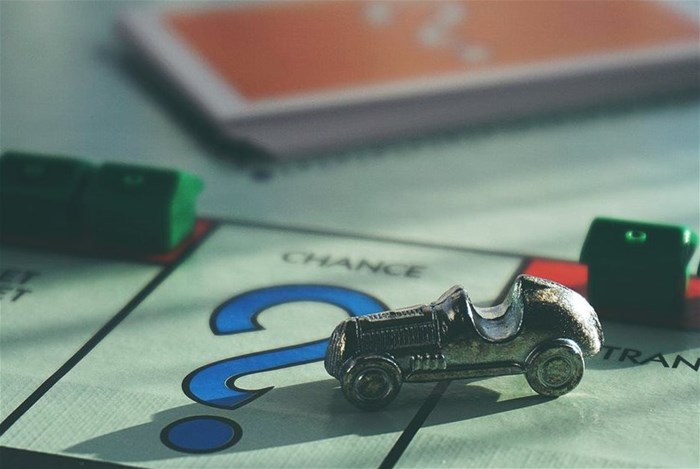
A system shock, by definition, alters the status quo of the system. The status quo is a complex web of negotiated “contracts” – social, legal, cultural and other – that over time settles into a common understanding of the way in which things operate. A system shock either breaks those contracts or pressurises them to be broken or modified. There is often elasticity in a system and so there is some level of rebound to the previous status quo – but never completely. And so, a new status quo, a new normal, a new way-things-work is born.
In practical terms, this means that if an organisation is going to survive or thrive in a new status quo, the structure of the organisation needs to change, the number of people in the organisation will likely change (up or down), client needs will begin to change and consequently, the products and services the organisation sells need to change, the supporting processes and systems for these new products will need to be created (change), and so on. In short, everything needs to change to some extent to adapt to the new new.
Before a new status quo is achieved, the system experiences “waves” moving through it – shocks and aftershock, peaks and troughs. The question is how do you break a contract in whatever form it may present (legal, social, cultural, other) and introduce a new contract that is more suitable in a context where conditions are evolving and a new equilibrium has still not been achieved? As the waves from the system shock move through time, there are peaks and troughs that require vastly different responses.
An example to illustrate the complexity of this quandary is a factory that manufactures perfume. Based on demand dropping for perfume during Covid-19 but spiking tremendously for hand sanitisers, the perfume factory has a hard decision to make. Does it continue to manufacture perfume and hope that things return to normal production levels quite soon, or does it repurpose its operations (with relative ease) to manufacture hand sanitisers?
This is not an easy decision to make since the answer to the question “How long will it last?” is unanswerable at the current time. If the decision is made to repurpose the factory for hand sanitiser, what will happen subsequently when other producers enter the hand-sanitiser market? Will the demand for hand sanitizers begin to decrease over time as well? Even though the perfume manufacturer can convert its plant relatively easily, there is still a cost (time, money, opportunity) of conversion.
Another question to consider is if that cost will or can be completely amortised? Over what period do we consider amortisation? What if the demand for hand sanitizers starts to decrease yet the demand for perfume does not correspondingly increase to a sufficient level for the factory to replace production capacity? What if there is price pressure on the hand-sanitiser market owing to oversupply, and a corresponding price pressure on perfume owing to market affordability? Does the factory look for other products to replace the demand and margin? And the list of questions goes on...
This example serves to illustrate the difficulty of the decision making required during a system shock. The height and depth of the peaks and troughs are unknown. The length of time they will endure is unknown, as is the nature of the aftershocks. What is known is that a new equilibrium will be created and the companies that will thrive will need to make decisions that serve them well, both during the period of shock (so they can survive the shock) and into the time of the new equilibrium.
This is much easier said than done.
A framework for making hard decisions is very important as it allows you to think rationally through the types of decisions you need to make from two perspectives – the immediate and the medium term. With a system shock such as the current one, I think it is incredibly difficult to think long term as there are bound to be continued seismic shifts in the system for years to come which will make it even more difficult to predict long-term scenarios with much accuracy. The luxury of long-term thinking will need to wait for a while. For now, the majority of us just need to get through today and the next two years.
My proposed framework for making hard decisions is to firstly break down every factor of your decision making into a short- and medium-term view. Secondly, and more importantly, begin to think through other factors you may not naturally have previously considered as factors but which, owing to Covid-19, have now become conceivable factors to include in your decision making.
Short- and medium-term scenario planning
Create a three-column table. Head the first column “Factors”, the second column “Short term” and the third column “Medium-term”. Begin to populate the obvious factors and your hypotheses of the movement or direction of these factors. Once completed, this will give you a strong visual expression of the probable short and medium term.
So, to continue with the perfume factory example, here is an illustration of how you would go about populating the table. First, capture your factors and scenarios in sentences as below, then break these down into the requisite columns – factor, short term and long term.
Adding new factors of choice into the decision-making equation increases the complexity of your decision making but also makes it more effective. Initially, you might have just been making a decision between investing in converting all or part of your perfume factory into a hand-sanitiser manufacturer or remaining as you are. A binary decision; this or that. Or perhaps a more complex decision; this or that, or this and that. Under status quo scenarios, where the rules are mostly known and the pieces in the puzzle pretty stable, entrepreneurs generally resort to binary-type decision making as it is efficient and effective.
Our daily lives are filled with yes and no's...Pick from a shortlist of logos, approve the budget or reject the budget. We make thousands of these decisions, many instinctively and confidently. Bringing in additional factors of choice may create better decisions but, when you are moving at breakneck speed in a competitive environment, there is more efficiency in fast, less complex binary-type decisions.
In a system shock, we naturally resort to our old decision-making process or try to make quick binary-type decisions. The speed at which the external world is changing puts pressure on us to do so. The only difference in these times, as mentioned in previous articles, is that we have less time and less data to make those decisions. I see many knee-jerk decisions being made, many of which are detrimental to the medium-term prospects of businesses.
Of course, there are exceptions but it is best in a fluid system shock to do two things: firstly, delay the decision for as long as possible so that more data can reveal itself; and secondly, force yourself to add more factors of choice to your decision-making table.
In our perfume factory example, the decision is effectively: Do we convert our plant to manufacturing hand sanitiser or do we stay as we are? Or perhaps a bit of both? This or that, or this and that.
Let’s add another factor such a buying a competitor or selling out to a competitor (or perhaps a combination). By adding competitors as a factor in your decision-making matrix, your choices now include spending money on converting your plant or using that cash on buying a competitor and thus increasing your market share.
A system shock loosens possibilities, loosens factors so to speak, to be added to your decision-making matrix that would not previously have been viewed as considerations. Factors of choice that would have seemed impossible just a few months ago are plausible today. Make sure you do not resort to your old yet efficient binary decision-making process when the system shock has gifted you factors of choice that you could never have even dreamed of just weeks ago.
